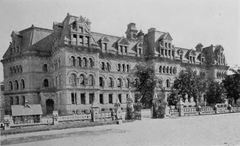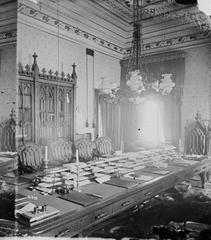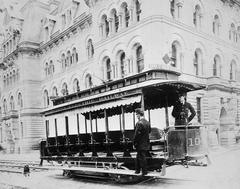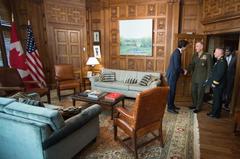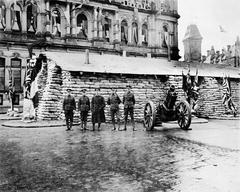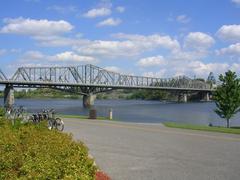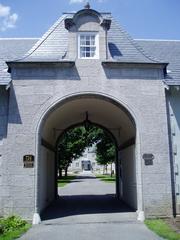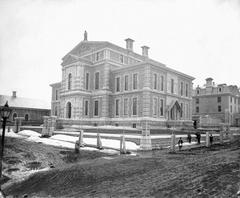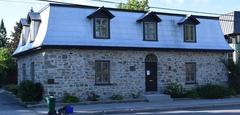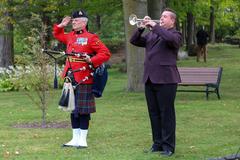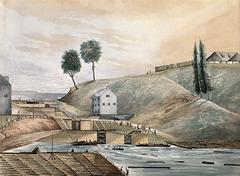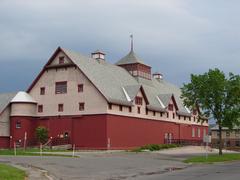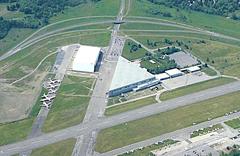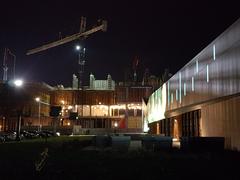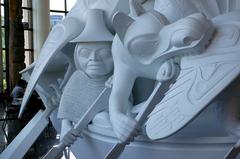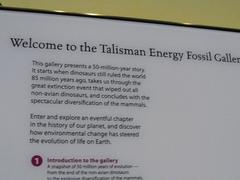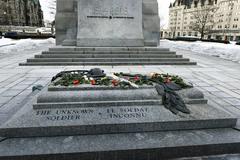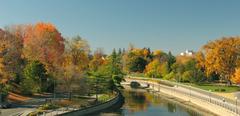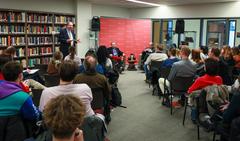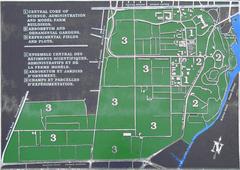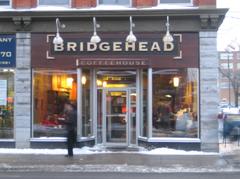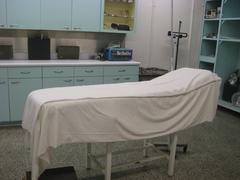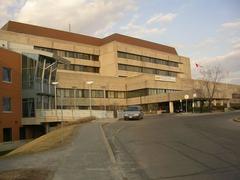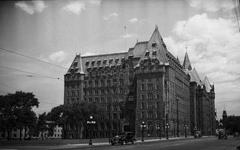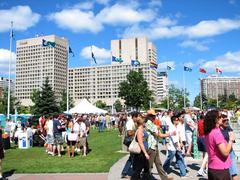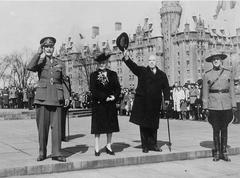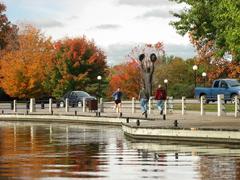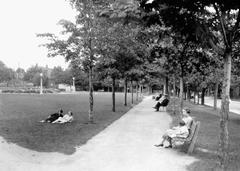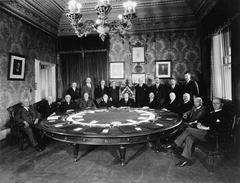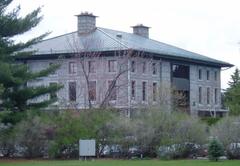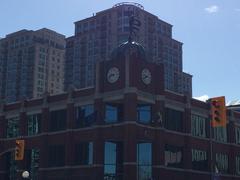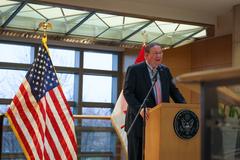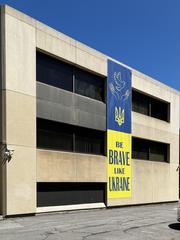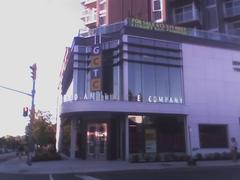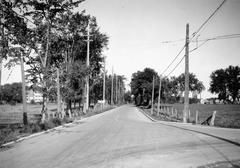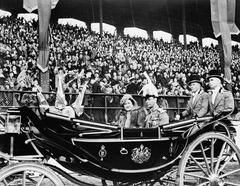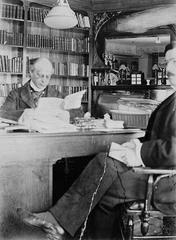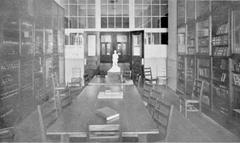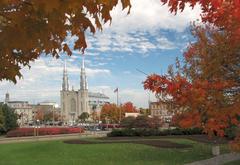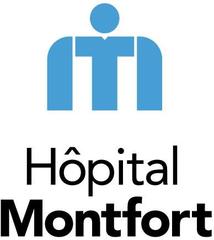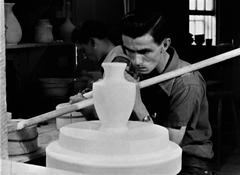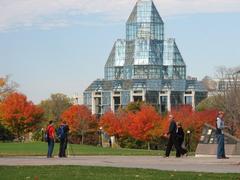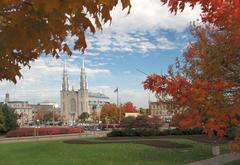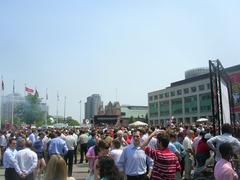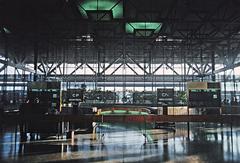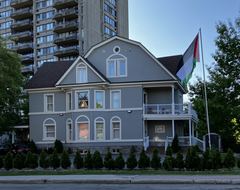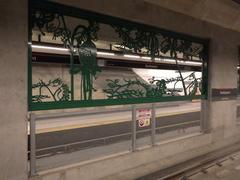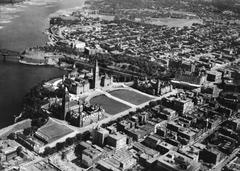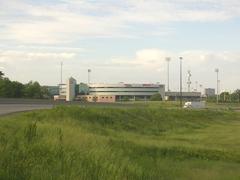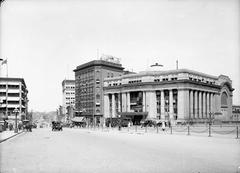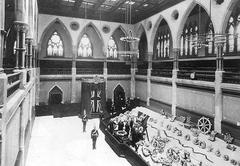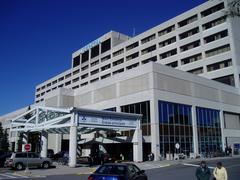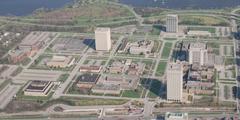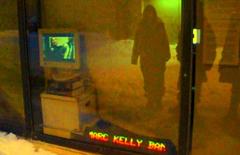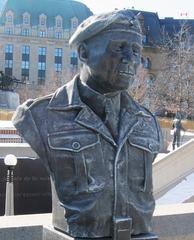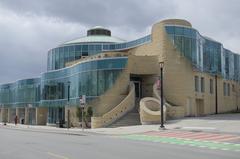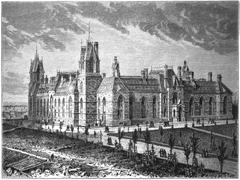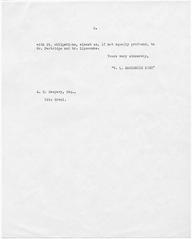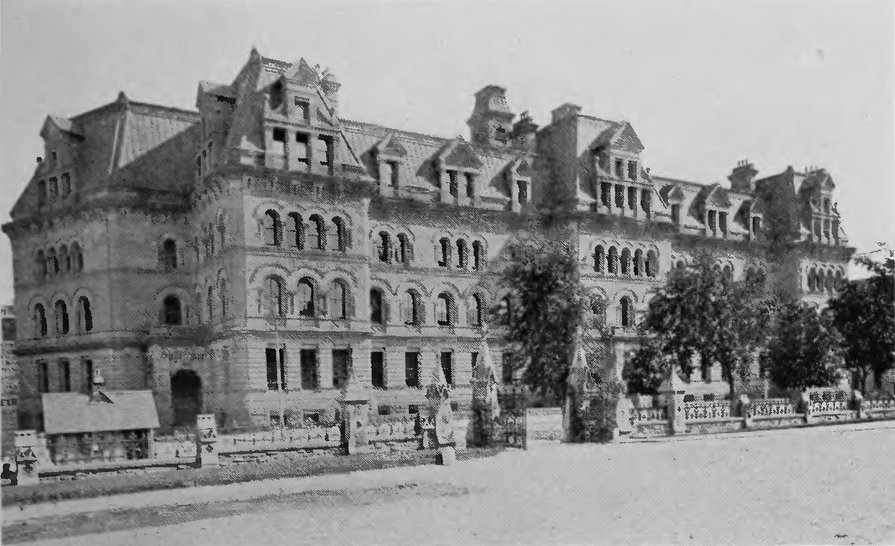
Office of the Prime Minister and Privy Council Ottawa: Visiting Hours, Tickets, and Visitor Information
Date: 14/06/2025
Introduction
The Office of the Prime Minister and Privy Council (OPMPC) building, formerly known as the Langevin Block, stands at 80 Wellington Street in Ottawa, directly across from Parliament Hill. As a distinguished symbol of Canada’s executive authority and architectural heritage, this landmark encapsulates more than a century of political, cultural, and historical significance. While the building itself is not open for public tours due to its sensitive governmental functions, it remains a must-see for its grand Second Empire architecture and its central role in the nation’s history.
This guide provides a comprehensive overview of the OPMPC, including its history, architectural highlights, practical visitor information, accessibility, travel tips, and details on nearby attractions. Whether you’re a history enthusiast, architecture lover, or planning your first trip to Ottawa, understanding the significance of this building will enrich your experience in Canada’s capital (Parks Canada, Ottawa Tourism, Wikipedia).
Table of Contents
- Historical Overview
- Architectural Significance
- Institutional Role and Contemporary Context
- Visiting Information
- Frequently Asked Questions (FAQ)
- Conclusion and How to Stay Updated
- References
Historical Overview
Origins and Construction (1883–1889)
The OPMPC building was constructed between 1883 and 1889 as the first federal departmental building outside Parliament Hill’s original boundaries (Parks Canada). Designed by Thomas Fuller, the Dominion Chief Architect, it was initially intended to accommodate departments such as Agriculture, Interior, Indian Affairs, and the Post Office. The building was originally named after Sir Hector-Louis Langevin, a Father of Confederation and Minister of Public Works (Wikipedia). Over time, it became the central hub for the Prime Minister’s executive functions, reflecting the growing complexity and scale of Canada’s federal government.
Transition and Renaming
Major renovations in the 1970s repurposed the building to accommodate the Prime Minister’s Office (PMO) and the Privy Council Office (PCO), elevating its status as the operational center of Canada’s executive branch (Wikipedia). Responding to public calls for reconciliation, the government officially removed the Langevin name in 2017 due to its association with the residential school system, reflecting a broader commitment to acknowledging Canada’s complex colonial past.
Architectural Significance
The OPMPC is a leading example of the Second Empire style, distinguished by:
- Limestone Façade and Pavilion Massing: The warm Nepean sandstone and symmetrical layout visually connect it to Parliament Hill’s iconic structures.
- Copper Mansard Roof and Dormer Windows: Hallmarks of Second Empire design, providing both aesthetic grandeur and functionality.
- Ornate Stone Carvings and Classical Elements: Detailed carvings and iron cresting demonstrate the craftsmanship of late 19th-century Canadian public architecture.
- Grand Arched Entrances and Interior Detailing: While the interior is restricted, it is known for high ceilings, marble floors, and period features.
Its prominent location at the intersection of Wellington and Elgin Streets situates it within the ceremonial heart of Ottawa, adjacent to Parliament Hill and the National War Memorial (Ottawa Tourism).
Institutional Role and Contemporary Context
The building houses both the Prime Minister’s Office (PMO) and the Privy Council Office (PCO). The PMO provides political leadership and strategic direction, while the PCO, led by the Clerk of the Privy Council, offers non-partisan administrative and policy support to the Prime Minister and Cabinet (canada.ca). This dual function makes the OPMPC unique in Canadian governance.
Its designation as a National Historic Site (1977) underscores both its architectural and political importance (Parks Canada). The building’s careful preservation ensures its continued role as a symbol of Canadian democracy and public service.
Visiting Information
Visiting Hours and Access
- Interior Access: The OPMPC is not open for public tours; there are no regular visiting hours or tickets for interior visits.
- Exterior Viewing: The building’s impressive façade can be admired year-round from Wellington Street and surrounding public spaces.
Accessibility
- Surrounding Area: The area around the OPMPC—including sidewalks, Confederation Square, and Parliament Hill grounds—is wheelchair accessible and pedestrian-friendly (Ottawa Tourism).
- Interpretive Panels: Informative plaques provide historical and architectural context for visitors.
Tickets and Tours
- No Tickets Required: There is no cost to view the building’s exterior.
- Guided Walking Tours: Various Ottawa walking tours, such as those by GPSmyCity, include commentary on the OPMPC as part of the federal precinct. Guided Parliament Hill tours can be booked via Parliament of Canada Visitor Services.
Nearby Attractions
- Parliament Hill: Free guided tours available; site of daily Changing of the Guard and major national ceremonies.
- National War Memorial and Confederation Square: Key commemorative sites within easy walking distance.
- ByWard Market: Vibrant market district with shops, restaurants, and local culture.
- Rideau Canal: UNESCO World Heritage Site, perfect for scenic walks, cycling, and winter skating.
- Canadian Museum of History: Offers exhibits on Canadian heritage and the world’s largest collection of totem poles.
Travel Tips
- Best Time to Visit: Late spring through early fall, when weather is pleasant and outdoor activities abound.
- Photography: Early morning and late afternoon provide ideal lighting for photographing the building’s limestone façade and copper roof.
- Events: National celebrations such as Canada Day and Remembrance Day often feature the OPMPC and Parliament Hill as focal points.
Frequently Asked Questions (FAQ)
Q: Can I tour the interior of the Office of the Prime Minister and Privy Council building?
A: No, the building is not open for public tours due to security considerations. Visitors may view and photograph the exterior.
Q: Are tickets required to visit or view the OPMPC?
A: No tickets are required to view the building’s exterior. Tours of Parliament Hill and other nearby landmarks may require advance booking.
Q: Is the area accessible for visitors with disabilities?
A: Yes, public areas around the OPMPC and Parliament Hill are wheelchair accessible.
Q: How can I contact the Prime Minister’s Office?
A: Correspondence may be sent to 80 Wellington Street, Ottawa, ON K1A 0A2, Fax: 613-941-6900 (pm.gc.ca).
Q: What are nearby attractions worth visiting?
A: Parliament Hill, ByWard Market, Rideau Canal, National War Memorial, and the Canadian Museum of History.
Conclusion and How to Stay Updated
The Office of the Prime Minister and Privy Council is a cornerstone of Canadian political heritage and a stellar example of 19th-century public architecture. While interior visits are restricted, its striking exterior and central location make it a compelling stop on any Ottawa itinerary. Enhance your experience by joining a guided walking tour, exploring nearby historic sites, and using resources like the Audiala app for audio guides and maps.
For the latest details on accessibility, events, and guided tours, consult official sources such as Ottawa Tourism, Parliament of Canada Visitors, and Parks Canada.
Plan your visit today and immerse yourself in the political and cultural heart of Canada’s capital.
References
- This is a sample text. (Parks Canada)
- This is a sample text. (Ottawa Tourism)
- This is a sample text. (Wikipedia)
- This is a sample text. (Parliament of Canada Visitors)
- This is a sample text. (pm.gc.ca)
- This is a sample text. (canada.ca)
- This is a sample text. (GPSmyCity)
